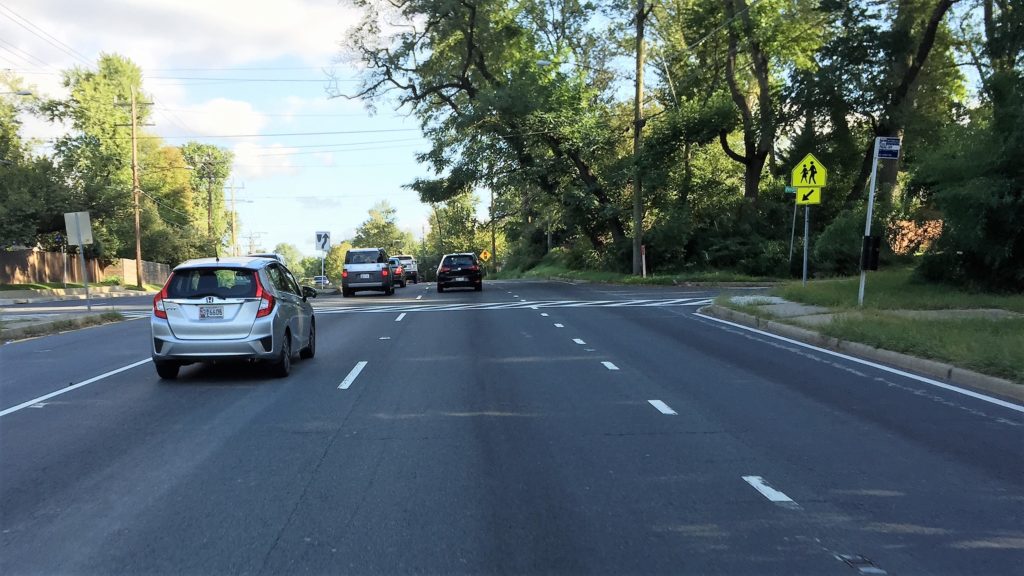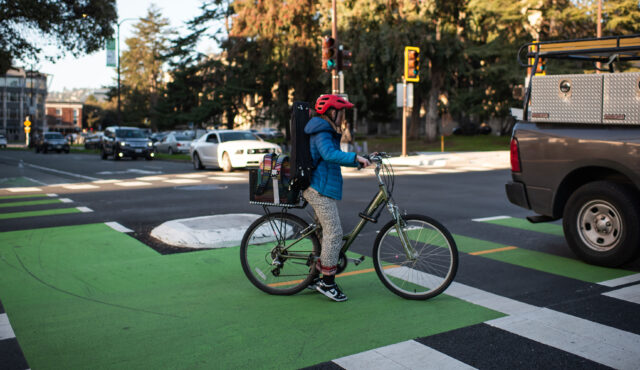Originally published in the November | December 2018 of PE Magazine, a publication of the National Society of Professional Engineers. It is reprinted here with permission. View the original here.
The first canon in the NSPE Code of Ethics is to “Hold paramount the safety, health, and welfare of the public.” But what exactly does this mean? As a young engineer, this was an abstract concept. My engineering classes focused on solving quantifiable problems, not weighing ethical design choices. Twenty years later, I’m a licensed transportation engineer in 23 states, many of which require I take ethics courses to maintain my licensure. These courses counsel against poor business practices, corruption, and practicing outside an engineer’s area of competence. In my experience, these courses do not explore how we should weigh the mobility and safety trade-offs inherent in transportation design against our ethical mandate to hold paramount the safety, health, and welfare of the public.
Most engineering disciplines assume people make mistakes. They test, monitor, and change their designs to prevent death and injury. Transportation engineers often say “safety is a paramount consideration” in our decisions; however, it is clear when observing the built environment that professional engineers have shown a willingness to routinely seal designs knowing people will die when predictable mistakes are made. Consider these examples:
- A motorist killed while turning left across three lanes of 45-mph traffic is often deemed responsible for “failing to yield.” The signal could prevent this death, but it is designed to minimize motorist delay, requiring motorists to judge gaps in fast traffic.
- A person “jaywalking” is killed by a motorist while crossing a seven-lane road to catch a bus, which comes once per hour. This person misjudged gaps in the high-volume, 40-mph traffic. A traffic signal is necessary for safe crossings under these conditions, but it is not installed because too few people are willing to attempt the crossing to meet industry standards; the standard justifies a signal for safety reasons after five or more people suffer personal injuries in a year.
- A bicyclist operating in 35-mph traffic is killed by a motorist. The death is deemed an accident and discussion focuses on whether the bicyclist wore a helmet, even when the cause of death was internal injuries. To reduce motorist delay, a bike lane is not provided.

These are real-world examples where a transportation engineer was part of a process that deemed these design choices acceptable, with insufficient regard for user safety. The deaths are frequently dismissed as mistakes made by the system user, yet these people often do not have a voice in the design process and quite possibly do not understand their elevated risk operating in these environments. The cost of this approach is tens of thousands of deaths and hundreds of thousands of injuries annually. While staggering, the societal cost is even larger when the financial expense to build and maintain auto-centric infrastructure and the resultant impacts to the environment and public health are considered.
While this apparent disregard of ethics is likely a result of some combination of politics, public pressure, and limited funding, these scenarios have been accepted as “standard practice” by our profession as we worked to decrease motorists’ travel time. Is it ethical to seal engineering drawings for a project with deficiencies we know will likely result in people getting injured or killed because this was standard past practice? When I discuss this question within my profession, it creates significant discomfort because nobody wants to feel complicit in the deaths of thousands of people every year and the related degradation of air quality and the environment. However, I and others believe we are undeniably complicit and ethically bound to change the system.
Recognizing that transportation system designers must be more accountable for the results, in 1997 Sweden adopted a Vision Zero approach, which states, “it can never be ethically acceptable that people are killed or seriously injured when moving within the road transport system.” It is, therefore, unethical to prioritize the mobility of one person over the safety of another user. Sweden has demonstrated that this approach saves lives, reduces injuries, and improves the overall quality of life for their people, with a 60% reduction in deaths since 1997. Many US cities and state departments of transportation are now adopting this vision.
For the United States to achieve results similar to Sweden’s, the transportation design profession must accept increased personal responsibility for the outcomes of our work. It will be challenging, but it is our ethical duty to hold paramount the safety, health, and welfare of the public while we solve our mobility challenges for all users of the roadway. This will require that we take a leadership role to educate the public, the media, politicians, and our fellow colleagues regarding the importance of this effort and the shortcomings of our present system. Time is of the essence, because in the time that it took you to read this essay, another person was killed and 105 more were injured on our roads.
Bill Schultheiss, P.E., is the director of sustainable safety for Toole Design, headquartered in Silver Spring, Maryland.



